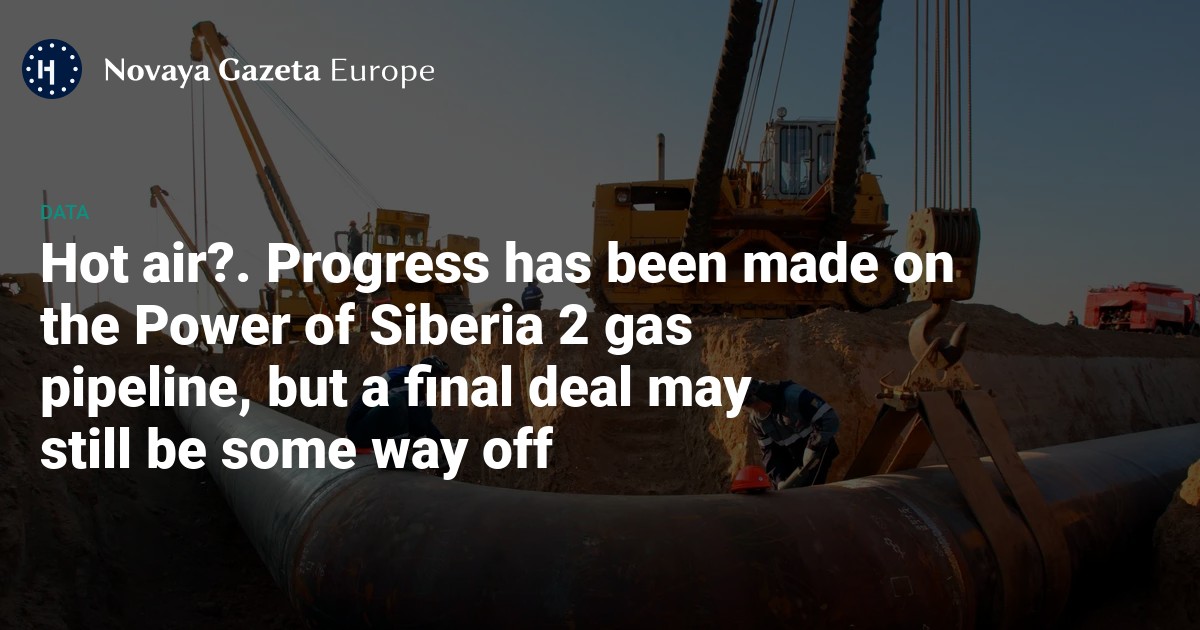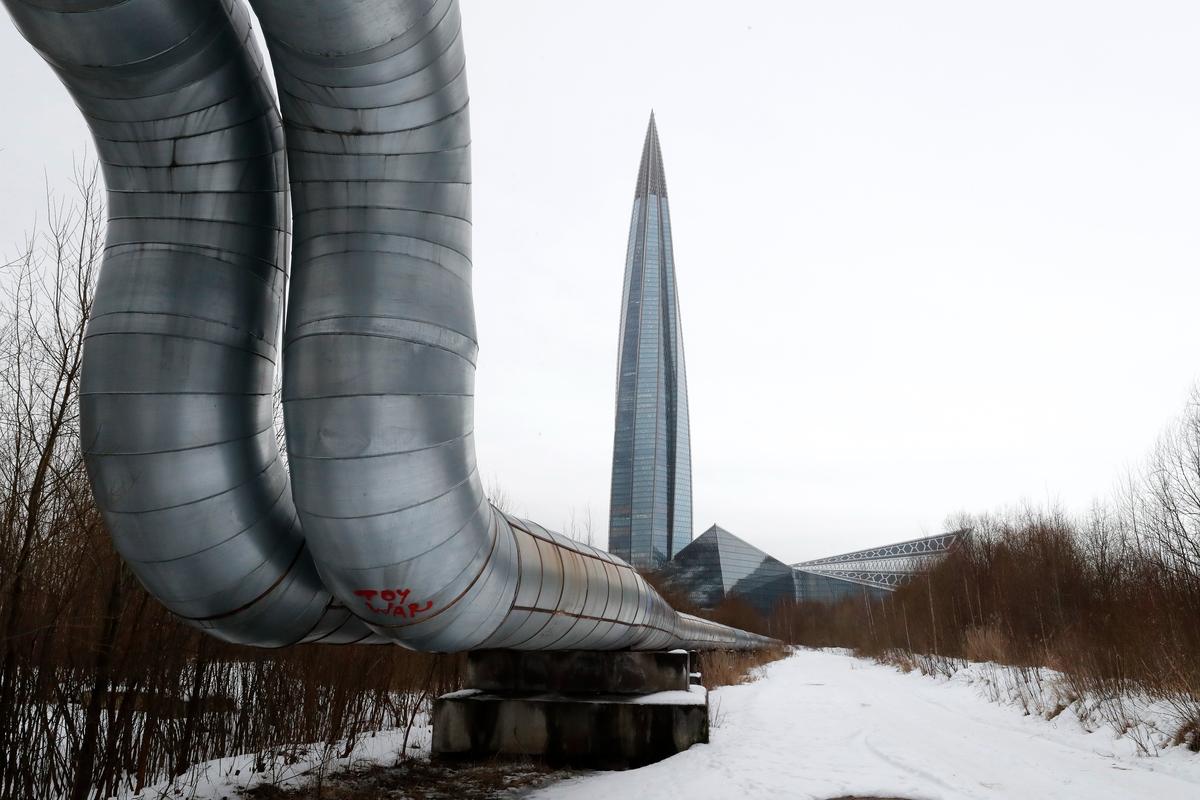



After years of Russian effort, Gazprom CEO Alexey Miller was on Tuesday finally able to announce the signing of what he deemed a legally binding agreement with the China National Petroleum Corporation (CNPC) to build the long-planned Power of Siberia 2 gas pipeline, a not insignificant boost to the Kremlin’s flagging energy-export fortunes.
According to Miller, the second of the two Power of Siberia pipelines — the first one went into operation in 2019 — will begin delivering up to 50 billion cubic metres (bcm) of natural gas to the Chinese market per year by 2030, and will continue to do so for at least 30 years.
The years it took to come to an agreement over the pipeline’s construction were due to the Chinese insistence that it be able to purchase Gazprom’s gas at prices aligned with Russia’s domestic market, bypassing the typical linkage to global fuel product index prices that are a standard feature of most gas supply contracts.
Russia’s so-called “strategic partner” has for years also been pushing for supply volumes, pricing formulas, and credit terms that were unfavourable to Gazprom, as well as demanding it be allowed to take a role in gas production within Russia and insisting that the pipeline follow a route favourable to its own interests. The key question now is whether the terms of the agreement that was signed this week are, in actual fact, mutually beneficial.
To what extent and in what areas Gazprom, which currently has a surplus of gas available for export following the collapse of its once-lucrative European markets, has been forced to make concessions remains unclear. CEO Alexey Miller declined to discuss the new terms of the deal, promising only to “report back later”.
Gazprom has lost virtually all of its once highly profitable European market, with exports to the EU and Türkiye plunging to nearly a quarter of their pre-war levels since 2022. The company’s need to secure new markets for its natural gas exports inevitably increased the chances that it would accept worse terms than it previously would have done.
Assuming that Power of Siberia 2 is built, the capacity of the existing Power of Siberia pipeline is increased from 38 bcm to 44 bcm per year as planned, and another pipeline is built that would allow it to export a further 12 bcm annually from gas fields on the Russian island of Sakhalin, Gazprom stands to see its export revenues increase by 44% — roughly €18.4 billion — compared to those of 2024, according to estimates made by Yekaterina Krylova of state-owned Promsvyazbank.
Experts interviewed by Novaya Gazeta Europe differ in their assessment of how binding the newly signed document is. The ambiguity lies in the fact that, on the one hand, it is a memorandum — a format that typically outlines broad frameworks without laying down strict conditions. On the other hand, Miller explicitly described it as a legally binding document.
According to Sergey Vakulenko, an expert at the Carnegie Russia Eurasia Centre, this type of document is usually not a full-fledged contract detailed in every aspect, but rather a paper that fixes the main parameters of a deal such as timelines, volumes and pricing formulas, which are no longer subject to change. Such memorandums, he added, often include penalty clauses in case one party fails to follow through and the deal ultimately comes to nothing.

Gazprom workers laying a gas pipeline near St. Petersburg, Russia. Photo: EPA/ANATOLY MALTSEV
Still, if insurmountable differences during contract negotiations mean that Gazprom and the CNPC once again fail to reach an agreement, the final word will not rest with the companies themselves but with the two heads of state, Vladimir Putin and Xi Jinping, Vakulenko noted.
Tatiana Mitrova, an energy expert at Columbia University’s Centre on Global Energy Policy, largely concurs with Vakulenko’s assessment. She describes a “legally binding memorandum” as an intermediate step between a broad memorandum of understanding and a full-fledged gas supply contract.
Like Vakulenko, she stressed that while such documents establish certain legal obligations including commitments to continue negotiations, to avoid seeking alternative partners, and to work towards finalising agreements on schedule, they stop short of fixing the most sensitive commercial terms, such as pricing formulas, take-or-pay conditions, or penalty clauses.
The deal reaffirms Moscow’s strategic partnership with China and showcases Russia’s ability to reroute its exports when necessary.
Mikhal Meidan, director of the China Energy Programme at the Oxford Institute for Energy Studies, agrees with Mitrova, saying there were “no prices, start times or volumes but an agreement to continue negotiations on the commercial terms. I am not even sure there are penalties if the commercial negotiations drag out or fail.”
In the contracts Gazprom signed with European buyers prior to 2022, the full range of commercial terms was included: from links to global petroleum product index prices or regional market-based gas rates to strict arbitration mechanisms. Such agreements left no room for further bargaining, immediately locking in financially binding supply schemes for decades. For Moscow and Beijing, however, this issue has remained a matter of protracted negotiation for the past 20 years.
This is likely why the newly signed document holds such significance for Russia as a symbolic gesture, argues Mitrova. The deal reaffirms the strategic partnership with China and showcases Russia’s ability to reroute its exports when necessary. “However, from a commercial perspective, it doesn’t guarantee revenue or ensure that the future pipeline will be fully utilised,” she added.

The headquarters of Russian energy giant Gazprom in St. Petersburg, Russia, 16 February 2023. Photo: EPA / ANATOLY MALTSEV
Dr. Erica Downs, a senior research scholar at Columbia University’s Centre on Global Energy Policy who focuses on Chinese energy markets and geopolitics, said that the “legally binding memorandum” was not a binding supply contract, but merely “obligates China and Russia to continue to discuss Power of Siberia 2” and “should not be interpreted as a green light from Beijing to proceed with the pipeline”.
Downs said she expected the main obstacles would be “price and volume”, adding that China would almost certainly “want to pay a lower price for PS2 gas than it does for PS1 gas given that Beijing is arguably in a stronger negotiating position today than it was in 2014”.
In addition, Downs said, China may be reluctant to commit to buying the full 50 bcm of gas that Power of Siberia 2 has the capacity to deliver each year in an effort to avoid becoming overly reliant on Russia for natural gas imports.
The Russian government has banned independent media. We were forced to leave our country in order to keep doing our job, telling our readers about what is going on Russia, Ukraine and Europe.
We will continue fighting against warfare and dictatorship. We believe that freedom of speech is the most efficient antidote against tyranny. Support us financially to help us fight for peace and freedom.
By clicking the Support button, you agree to the processing of your personal data.
To cancel a regular donation, please write to [email protected]
VPNovaya
Help Russians and Belarusians Access the Truth
